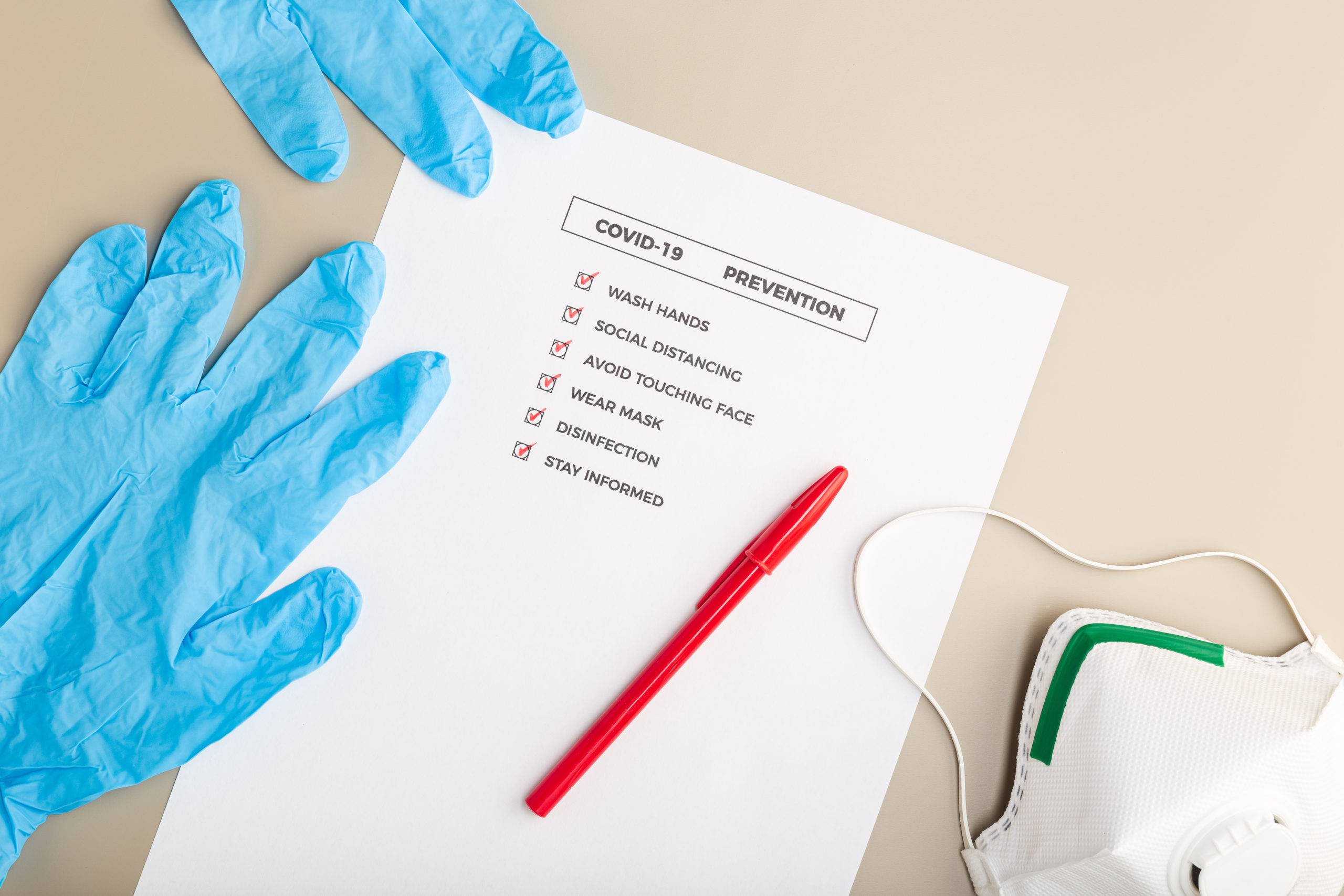Adam Lueken

Cleaning, sterilization and team protocols have always been a part of any medical practice. But last year, COVID-19 took the need for those protocols to a whole new level. In order to protect the health of patients, maintaining a daily checklist of cleaning, sterilization and team protocols has become the norm. Although 2021 has shown some light at the end of the tunnel with more and more people getting vaccinated, COVID-19 is still a widespread issue and following the right protocols is still very important. Is your COVID-19 checklist still efficient?
We’ve previously discussed some tips and points to consider when keeping your patients and team members safe. As you review your checklist, let’s take a look back at some of those items.
Ensure Your Cleaning/Sterilization Protocols Are Effective.
- Disinfect areas, equipment and surfaces between uses. Use 70% ethyl alcohol, sodium hypochlorite at 0.5% or any other disinfectant that meets the EPA’s criteria for use against SARS-CoV-2.
- Wear disposable gloves to clean and disinfect and discard after use or use reusable gloves that are dedicated only for cleaning and disinfecting. Always wash hands after removing gloves.
- Clean any dirty surfaces using soap and water first, then use disinfectant.
- Cleaning with soap and water reduces the number of germs, dirt, and impurities on the surface. Disinfecting kills any remaining germs on surfaces, which further reduces any risk of spreading infection.
- Practice routine cleaning and disinfection of frequently touched surfaces. More frequent cleaning and disinfection may be required based on the level of use.
- Visit the CDC website for full cleaning/sterilization information.
Disinfect Your Facility If Someone Is Sick or Has a COVID-19 Diagnosis.
- Close off areas used by the person who is sick. Open outside doors and windows and use fans or other engineering controls to increase air circulation in the area. Wait 24 hours before you clean or disinfect. If 24 hours is not feasible, wait as long as possible.
- Clean and disinfect the immediate workspace used by the person who is sick or diagnosed with COVID-19, such as the surfaces in their office or cubicle. If common areas such as bathrooms or shared items have already been routinely cleaned and disinfected, there is no need for additional action.
- Vacuum the space if needed. Use a vacuum equipped with high-efficiency particulate air (HEPA) filter and bags, if available.
- Do not vacuum a room or space that has people in it. Wait until the room or space is empty to vacuum, such as at night, for common spaces, or during the day for private rooms.
- Wear disposable gloves to clean and disinfect. For soft (porous) surfaces such as carpeted floors or rugs, clean the surface with detergents or cleaners appropriate for use on these surfaces, according to the textile’s label. After cleaning, disinfect with an appropriate disinfectant (on EPA List N: Disinfectants for Coronavirus (COVID-19). Soft and porous materials, like carpet, are generally not as easy to disinfect as hard and non-porous surfaces. EPA has listed a limited number of products approved for disinfection for use on soft and porous materials. Follow the disinfectant manufacturer’s safety instructions (such as wearing gloves and ensuring adequate ventilation), for concentration level, application method and contact time.
- While vacuuming, temporarily turn off in-room, window-mounted, or on-wall recirculation HVAC to avoid contamination of the HVAC units.
- Don’t deactivate central HVAC systems. These systems tend to provide better filtration capabilities and introduce outdoor air into the areas that they serve.
- Once the area has been appropriately disinfected, it can be opened for use.
Keep Minimizing Patient Contact.
- Ensure you have signs in visible locations that explain COVID-related precautions and mark off social distance points as needed.
- Remove some chairs from your waiting room to space apart as needed, and remove magazines and other reading materials. Place additional hand sanitizer and wipes in the area too.
- Have hand sanitizer and/or a place to wash hands with soap and water in all exam rooms. Consider keeping all doors patients use open (entrance, through the practice and exit).
- Review OSHA’s personal protective equipment (PPE) standards and make sure there’s enough equipment (masks, gloves, etc.) for your staff.
- See patients alone unless they need a caregiver (or parent for children) with them during the visit. Other individuals should wait in their car or outside the practice.
- Masks and eye protection should be worn by staff and patients should wear masks when in the practice.
- Limit other visitors to the practice, including suppliers and vendors.
To view the full list of AAD guidelines for COVID-19, visit the AAD website here.
If you’re still struggling with COVID-19’s challenges, we’re always a phone call or click away to support your needs. Schedule a consultation with one of our practice management experts today!